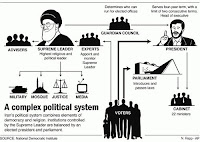Avtobaza !

An interesting article from Stephen Trimble catches one’s eyes; it states or rather suggests Iran’s usage of a Russian Jamming system with regards to its downing of a US Unmanned aerial vehicle (UAV). It immediately jumps into one’s eyes, that it could all have been a counter measure making sure Iranian and Russian engineers get access to electronic technologies they are supposed to. One is no specialist on such issues but it seems Iran must act very carefully on the information it extracts or uses from this downed RQ-170. The technology could well be a tracker if implemented guiding the observer to the sources of defense....one never knows. Whatever the case we publish his article for your information.
"Could this be the smoking electron in the alleged unmanned air vehicle (UAV) incident over Iran?
The original reports that Iran "shot down" a Lockheed Martin RQ-170 Sentinel appear to be misleading. Iranian news agency reports credited the army's electronic warfare unit with bringing down the UAV, but apparently in a way that limited the amount of damage on landing or impact.
Only six weeks ago, Russia announced delivering the Avtobaza ground-based electronic intelligence and jamming system (shown above) to Iran. Most Russian weapons exports to Iran are blocked, including the proposed transfer of the S-300 surface to air missile system. But there is a key difference between a SAM battery and a jamming system. The S-300 can vastly complicate a strike on an Iranian nuclear site at Natanz or Qoms. A jamming system, such as the Avtobaza, is unlikely to be used to defend such a site because it could interfere with the radar of the S-300 or the Tor-M1 SAM battery.
The Avtobaza, moreover, is designed to jam side-looking and fire control radars on aircraft and manipulate the guidance and control systems of incoming enemy missiles. It would be the perfect tool to target and perhaps infiltrate the communications link that allows a UAV to be controlled from a remote location.
The incident, of course, has not been confirmed with visual evidence of the allegedly captured RQ-170. Unlike 50 years ago, when the Soviet Union shot down the Lockheed U-2, the Iranians will not be able to produce a captured Francis Gary Powers. In 1961, the Soviets appeared to destroy their credibility by releasing imagery of the wreckage of the wrong aircraft -- a luckless MiG possibly shot down by mistake in the fusillade aimed at Powers' U-2. When the Soviets produced Powers, who survived and was captured, the world finally had undeniable proof.
So there is no script in the propaganda textbook for these kinds of incidents. They tend to evolve in their own way. Iran may never produce evidence to back up their claims, or they might later today.
Interestingly, the International Security Assistance Force has made no effort to deny Iran's claims. Instead, the NATO headquarters in Kabul issued a statement acknowledging the loss of one of their UAVs over western Afghanistan last week. The statement also suggested the Iranians may have simply found the misplaced UAV for them. It may be important that NATO officials did not deny Iran's claims that the UAV was the RQ-170, which is known to operate from Kandahar where it was originally spotted."



Comments